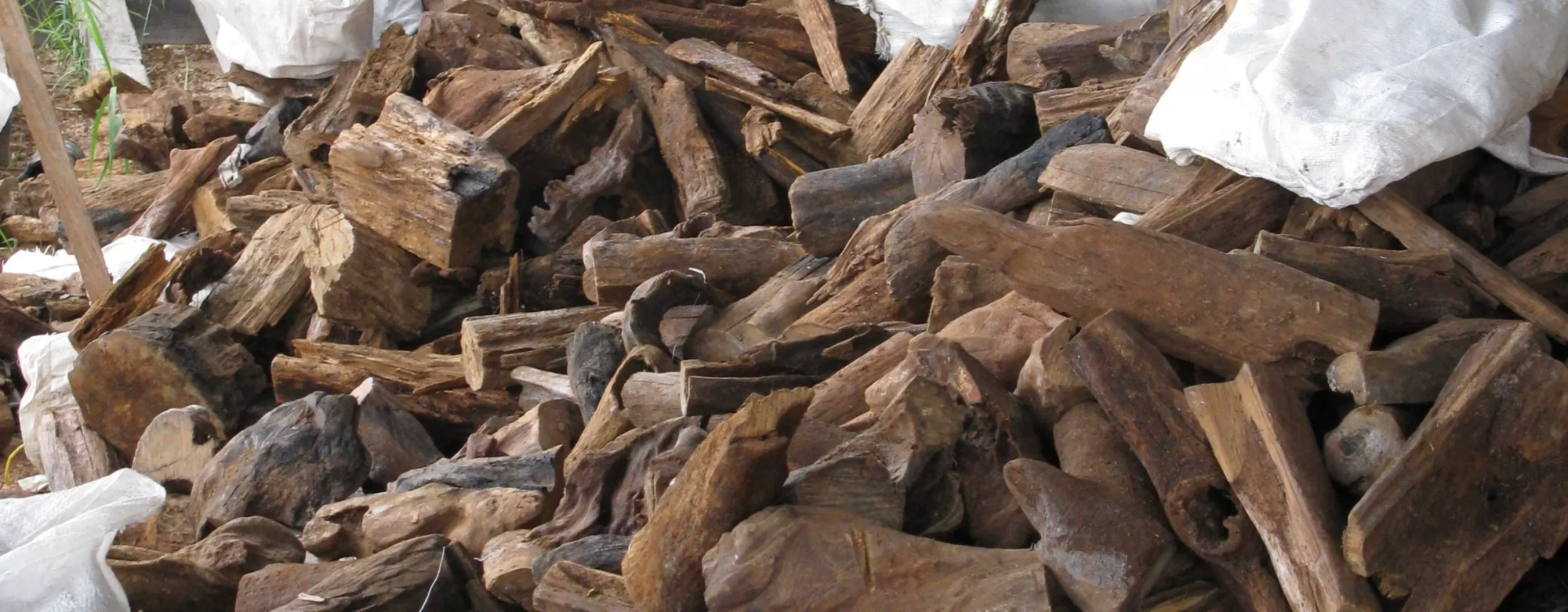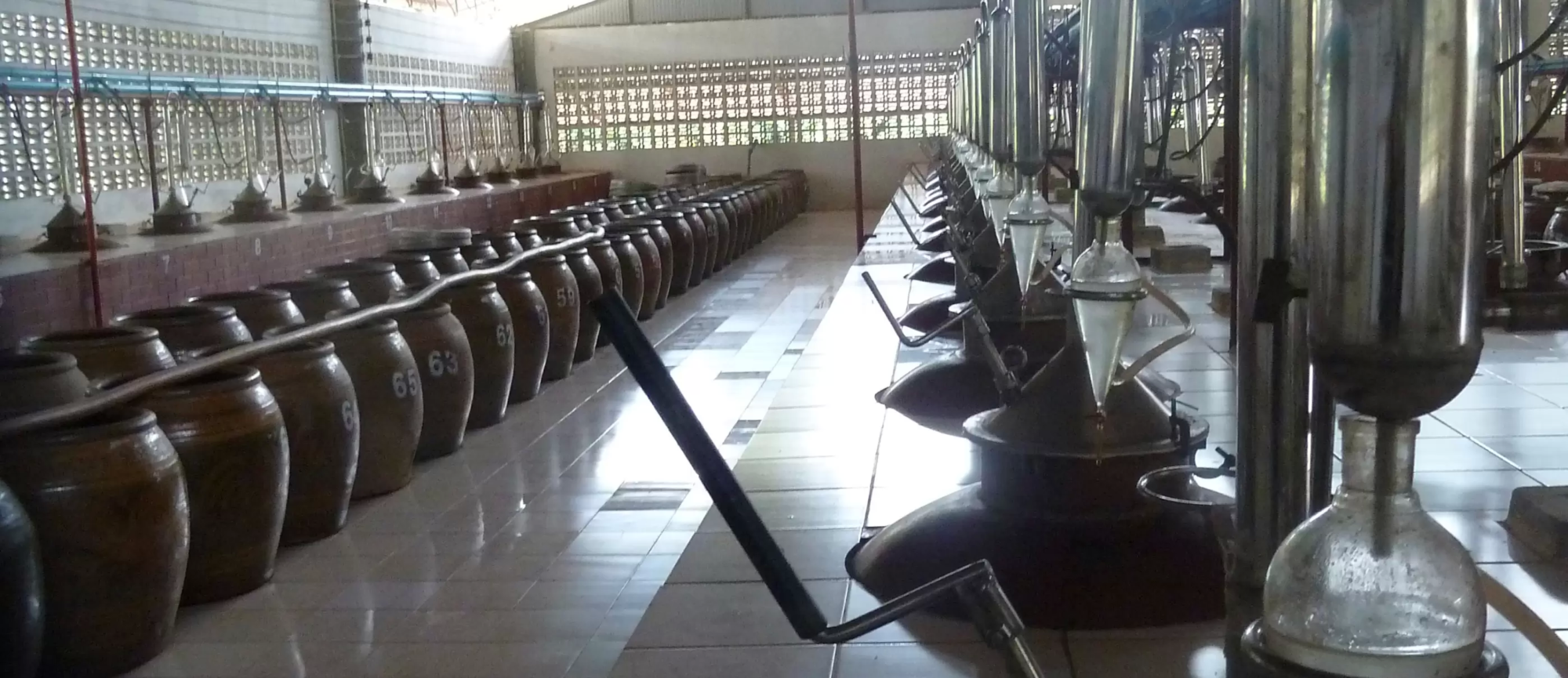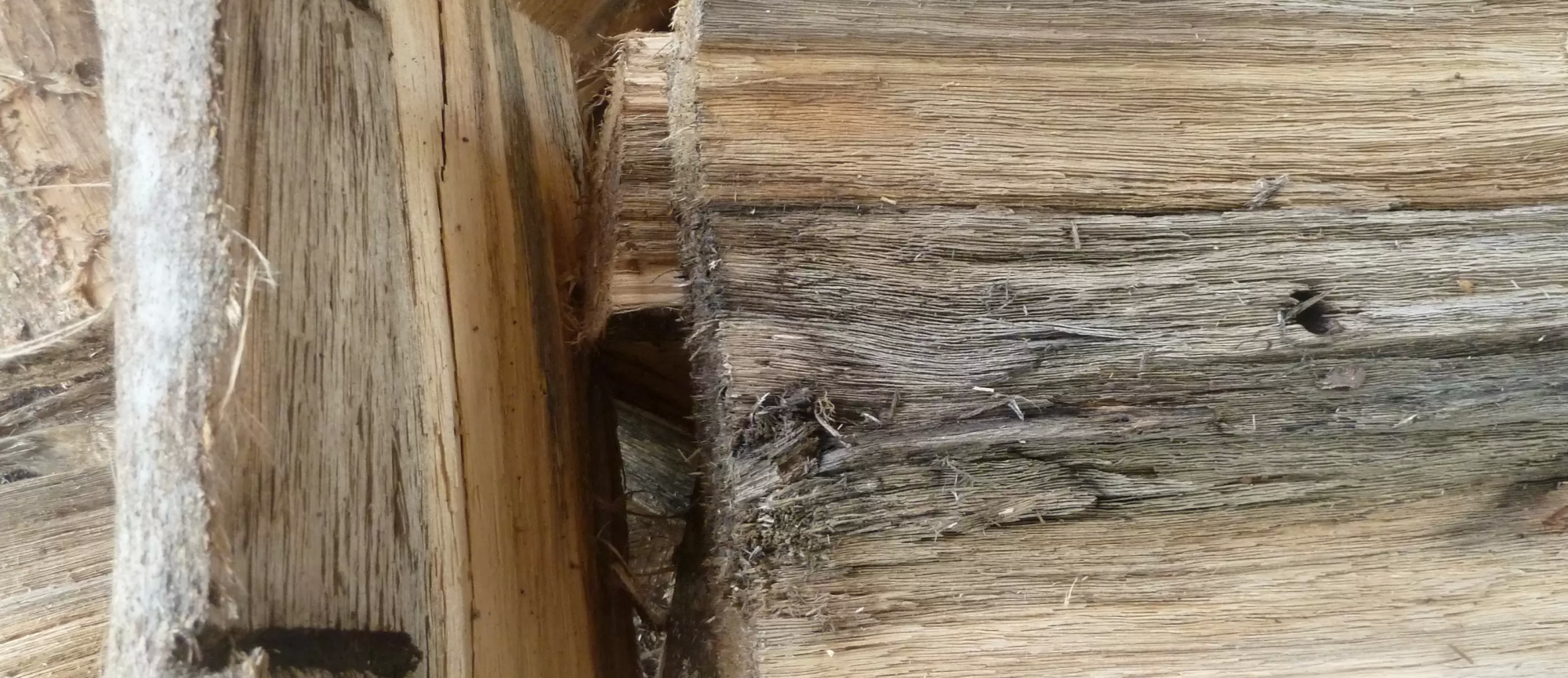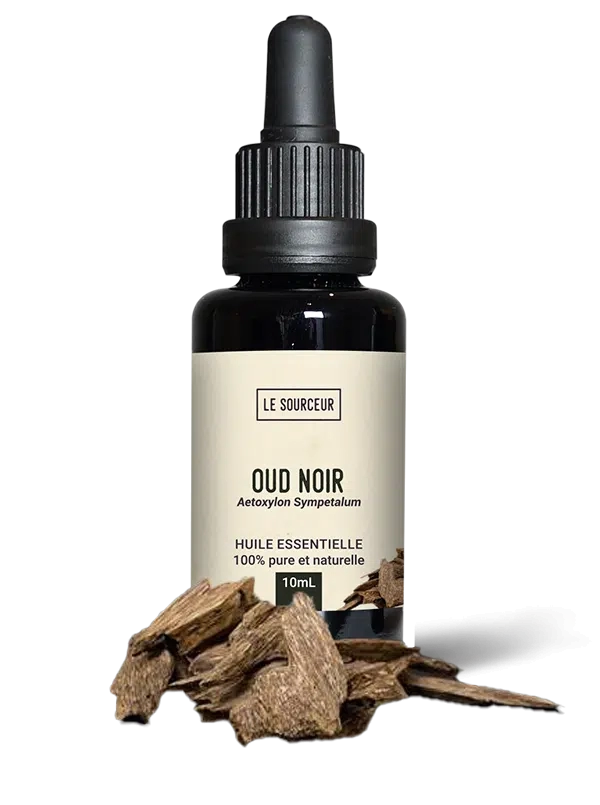Livraison offerte dès 79€ d'achat !
Nouveautés : Les Infusions, les Ultrasons et les Upcycling !
Livraison offerte dès 79€ d'achat !
Nouveautés : Les Infusions, les Ultrasons et les Upcycling !
First of all, it’s not quite correct to call this material Black Oud.
It’s actually a fake Oud whose real name is Aetoxylon Sympetalum.
Gesundheit.
It’s a tree from the Thymeleaceae family, like its cousin Agarwood or Aquilaria.
Hence its nickname.
It is endemic to the island of Borneo, shared by Indonesia, Malaysia and Brunei.
In fact, it can only be found there, scout’s honour, so we’ll spare you the trouble of searching the world’s forests!

As rare as it is precious, Black Oud is originally dead mangrove wood harvested directly from the feet of trees near the coast.
Hence the name “gaharu buaya” in Indonesian, commonly translated as “crocodile eagle wood”.
Still largely unknown in Europe, it is highly prized in Middle Eastern countries, which have made it a flagship ingredient in oriental perfumery.
So much so that, in response to growing demand, the industry has expanded.
There are now several producers and a number of sustainable, responsible plantations on the island.
In the wild, i.e. in Indonesian forests, Aetoxylon Sympetalum can grow up to 40 meters tall and 60 centimeters in circumference.
Its bark is generally dark brown to black.
Like many varieties of tree, it produces red fruits up to 5 centimetres in diameter, which are not edible.
It is generally found in mangrove swamps, but can also thrive in the forests of the island’s lowlands (up to 100 m altitude).

A species that is endemic to Borneo alone means that it must be protected.
Preserving the species was also a way of avoiding repeating the mistakes made in the past with Agar wood, particularly Aquilaria.
For a long time, Black Oud was nothing more than dead mangrove wood, decomposing on the ground and collected directly from the feet of the Aetoxylons.
It was harvested in the wild and yields were minimal.
Only a few connoisseurs in the Middle East could lay claim to the precious sesame.
Following the growing demand for wood and the impetus of a number of committed local players, the first productions of Black Oud saw the light of day.
They had to be sustainable and have no impact on either the species or the ecosystem in Borneo.
Today, as every year, many mature trees are cut down, while twice as many new shoots are planted.
All this to serve the needs of the entire world, in particular the oriental perfume industry, which loves its delicious, fatty essential oil from the heart of the wood.

Gaharu buaya”, as the locals call it, is extracted by hydrodistillation.
The wood can be vapodistilled or hydrodistilled for long days to obtain a thick, viscous, amber-colored fragrant liquid.
Its fragrance is as surprising at first as it is delicious when you let yourself be carried away by its scent.
A sort of soft leathery scent, you’d almost think you were in the middle of a new shoe store.
While the Oud has been used for millennia, its cousin the Aetoxylon is still largely unknown.
Culturally, the former is renowned in many fields, including spirituality, medicine and art.
In religion, it plays an important role in ceremonies for Buddhists, Muslims, Hindus, Taoists and even Christians.
In traditional Chinese, Arabic and Indian medicine, it is recognized for its digestive properties and its ability to soothe the body and mind.
Finally, its robust wood has inspired rare and priceless olfactory sculptures.
Conversely, there is no record of Black Oud being used in history.
But it’s a safe bet that it’s now following in the footsteps of Agarwood.
Outside these classic spheres, Black Oud has become an essential ingredient in oriental perfumery.
Its essential oil is used as a heart or base note for its delicious, leathery fragrance.
It is also slightly smoky, warm and animalic.
It represents a fine alternative to more classic ingredients such as tobacco, birch or cistus labdanum.

An essential facet of our job as a source is to be able to meet the immediate needs of perfumers while respecting our commitments to the planet.
The Black Oud sector is a perfect example of this.
A few years ago, we were asked to add an Oud fragrance to our palette.
It was a great opportunity.
We dreamed of offering this fabulous material, but not at any price!
Like many others, we were aware of the excesses of the industry, its mistakes and failures, whether intentional or not.
There was no question of reproducing them.
And to understand everything, we have to go back to the very essence of the material.
What is Oud?
The Oud is rooted in several varieties of tree, from the Aquilariaceae to the Thymeleaceae, the Burseraceae and the Euphorbiaceae.
They are known as agarwood, aloe wood or calambac wood.
In the face of eminent danger, these trees secrete an abundance of resin from the heart of their trunks: whether as a result of fungal infection, to defend themselves against pests, prevent fires or simply dress their wounds.
It is precisely this resin, or defense mechanism, that is known as Oud.

And this material is particularly fragrant, with rare notes of warmth, wood and leather.
A singularity that gives it a major place in perfumery, especially oriental perfumery.
With all the pitfalls that implies.
Between overexploitation and deliberate cutting of trees, all species are threatened.
So much so that they are now listed as protected species on the CITES list.
And yet, in the face of ever-increasing demand, poaching never stops.
So what’s left?
There was no question of participating in this massacre.
But at the same time, we needed those leathery, animalic notes so dear to perfumery.
So we searched for a long time, both in books and in the field, and we also met a lot of people.
Then the solution finally came to us.
We heard about a fabulous material in Borneo, a cousin of the Oud in both species and fragrance, if a little different.
We went there and immediately fell in love.
The kind of encounter you never forget, the kind that smells like a pair of new shoes you proudly wear on the street.
It was Aetoxylon Sympetalum, and the obvious name for it was Black Oud.
A few years later, it became one of our star materials.
So much so that the wild harvest, limited to dead mangrove wood, has been transformed into an eco-responsible production chain, with products for generations to come.

TGSC – “Aetoxylon sympetalum” – http://www.thegoodscentscompany.com/data/es1653441.html
Wikipedia – “Aetoxylon” – https://en.wikipedia.org/wiki/Aetoxylon
CITES list – CITES species – https://cites.org/fra/disc/species.php


 informations
informations  mon compte
mon compte  contact
contact Copyright © 2024 Le Sourceur. Tous droits réservés / Développement : Mrlsagency
 matieres sourcees
matieres sourcees  rejoindre la tribu
rejoindre la tribu